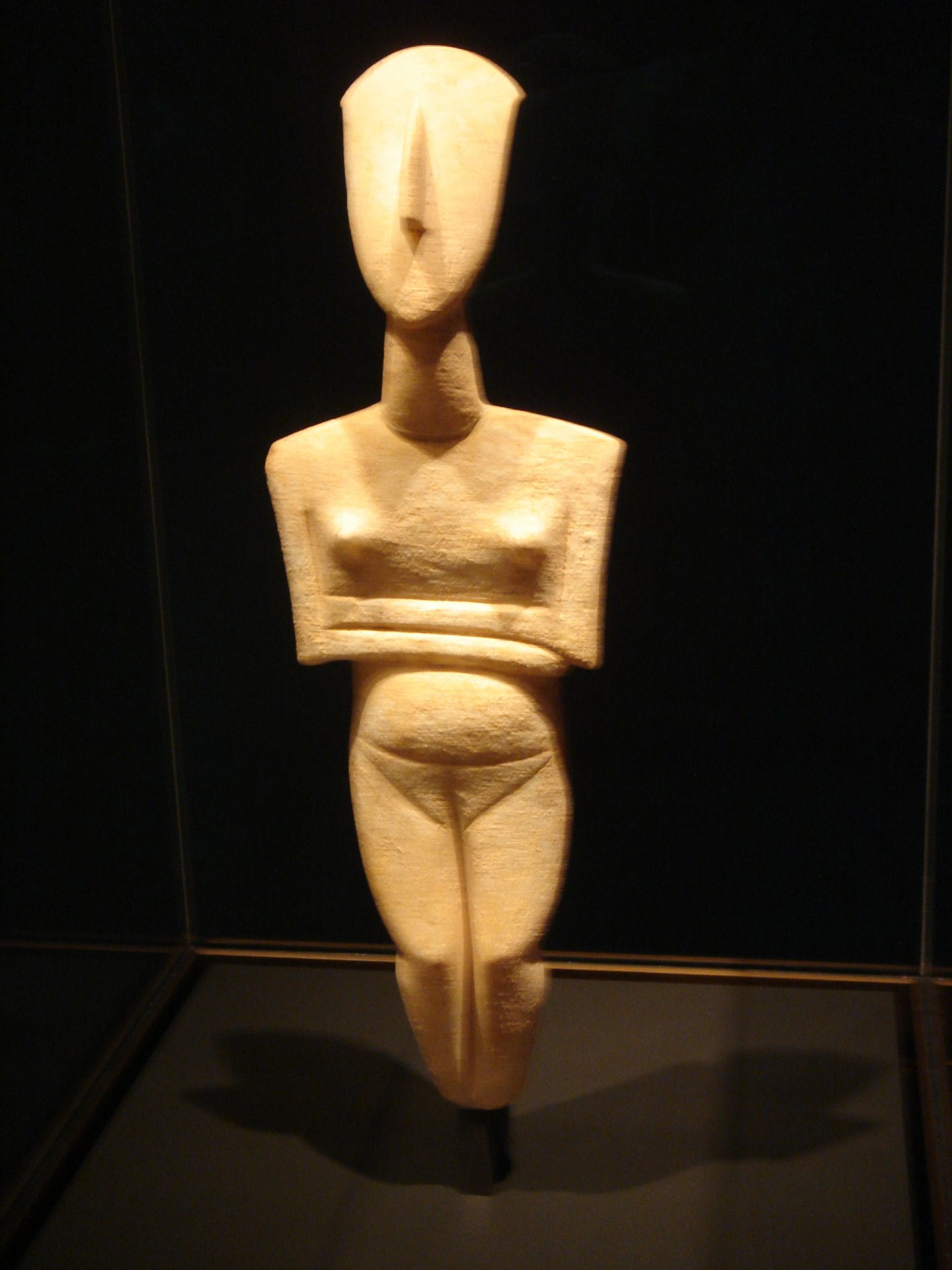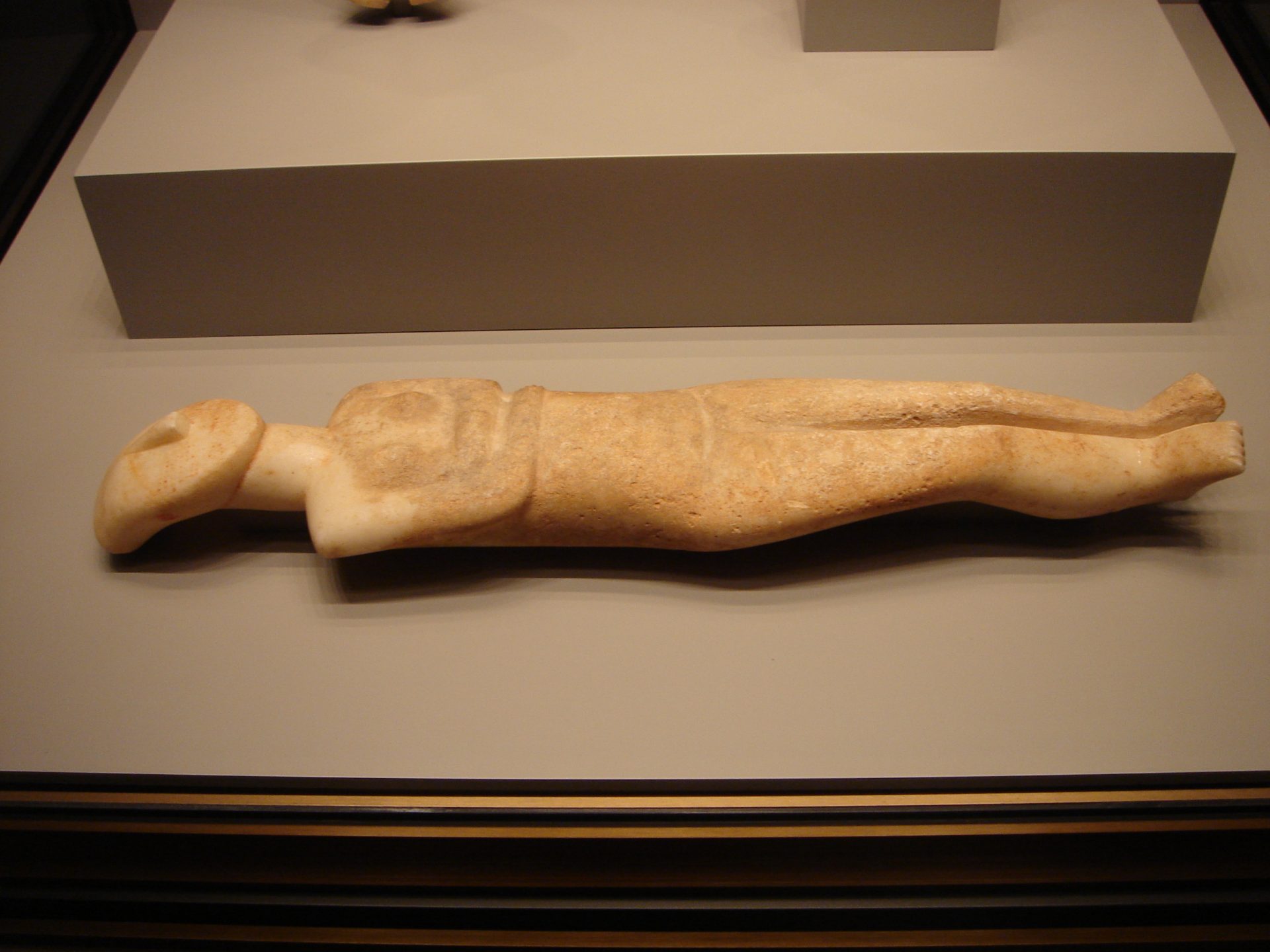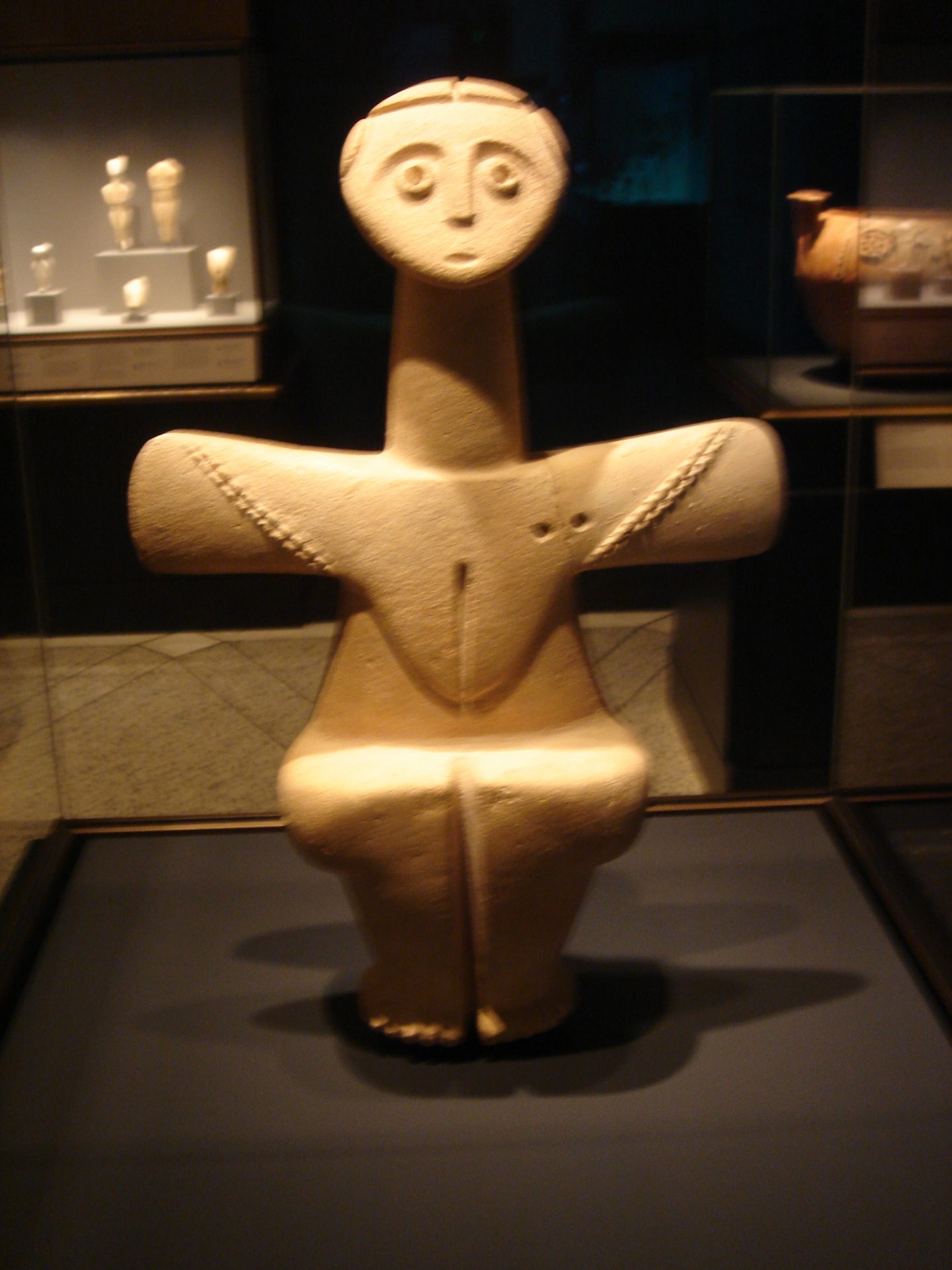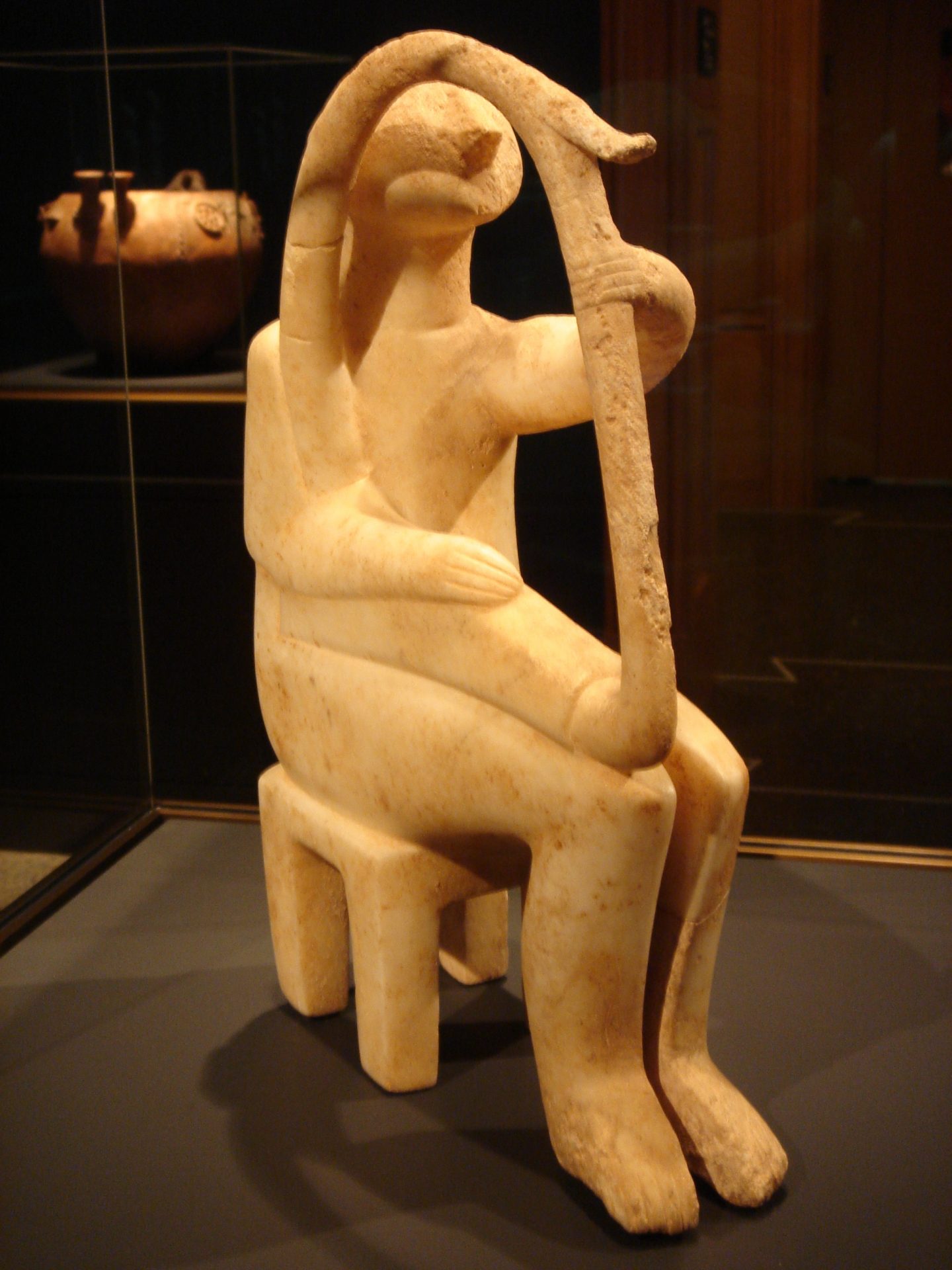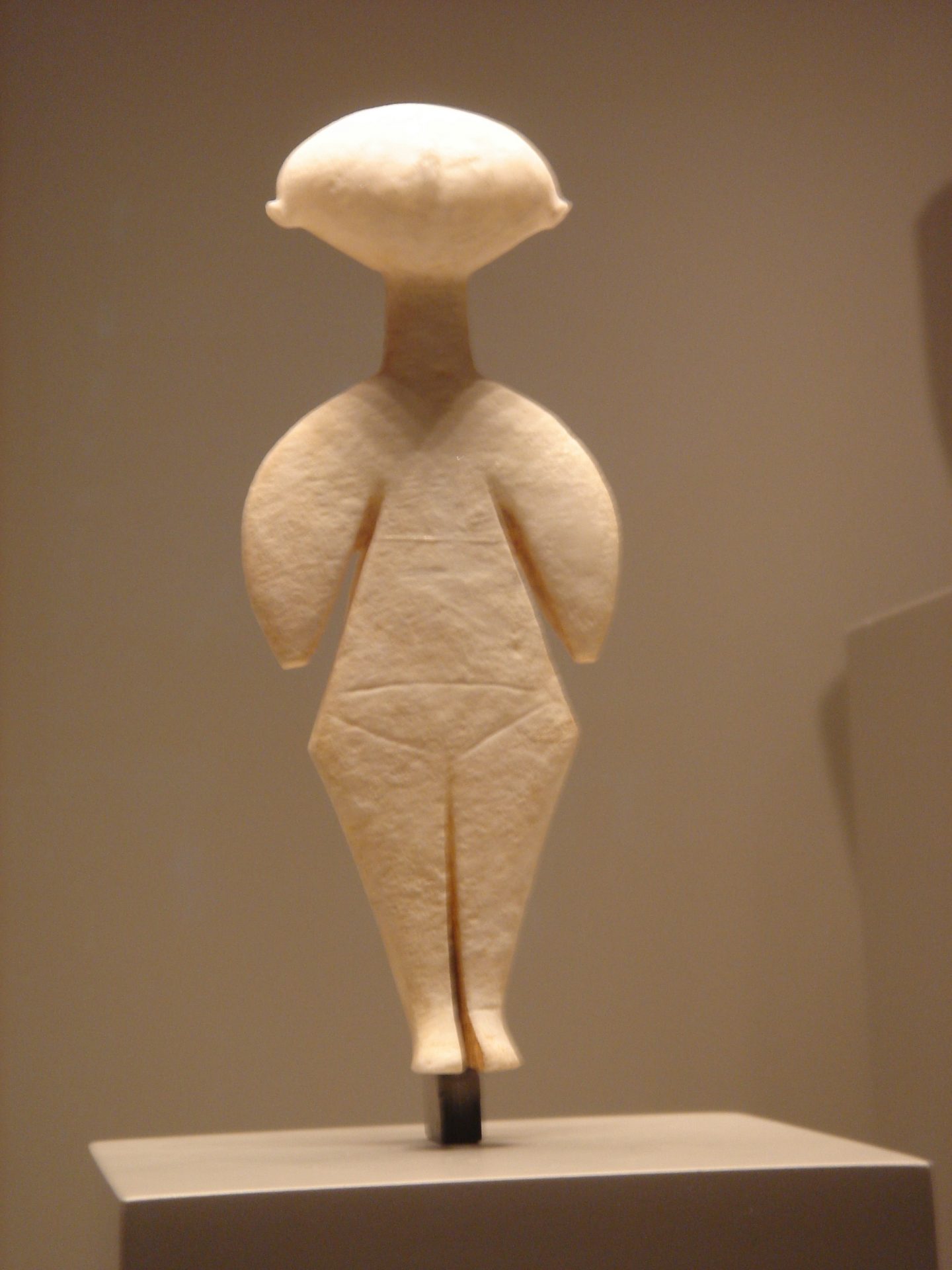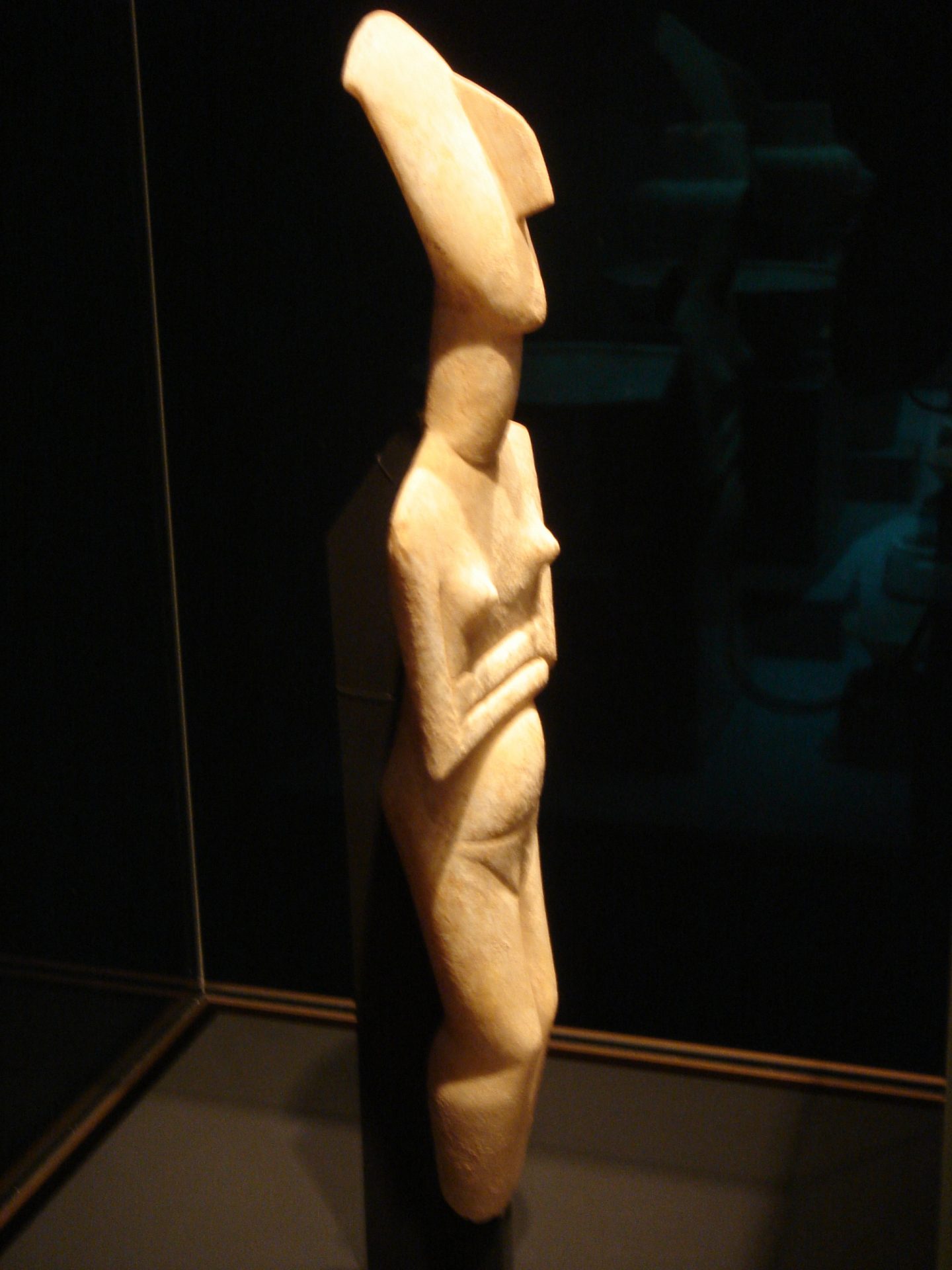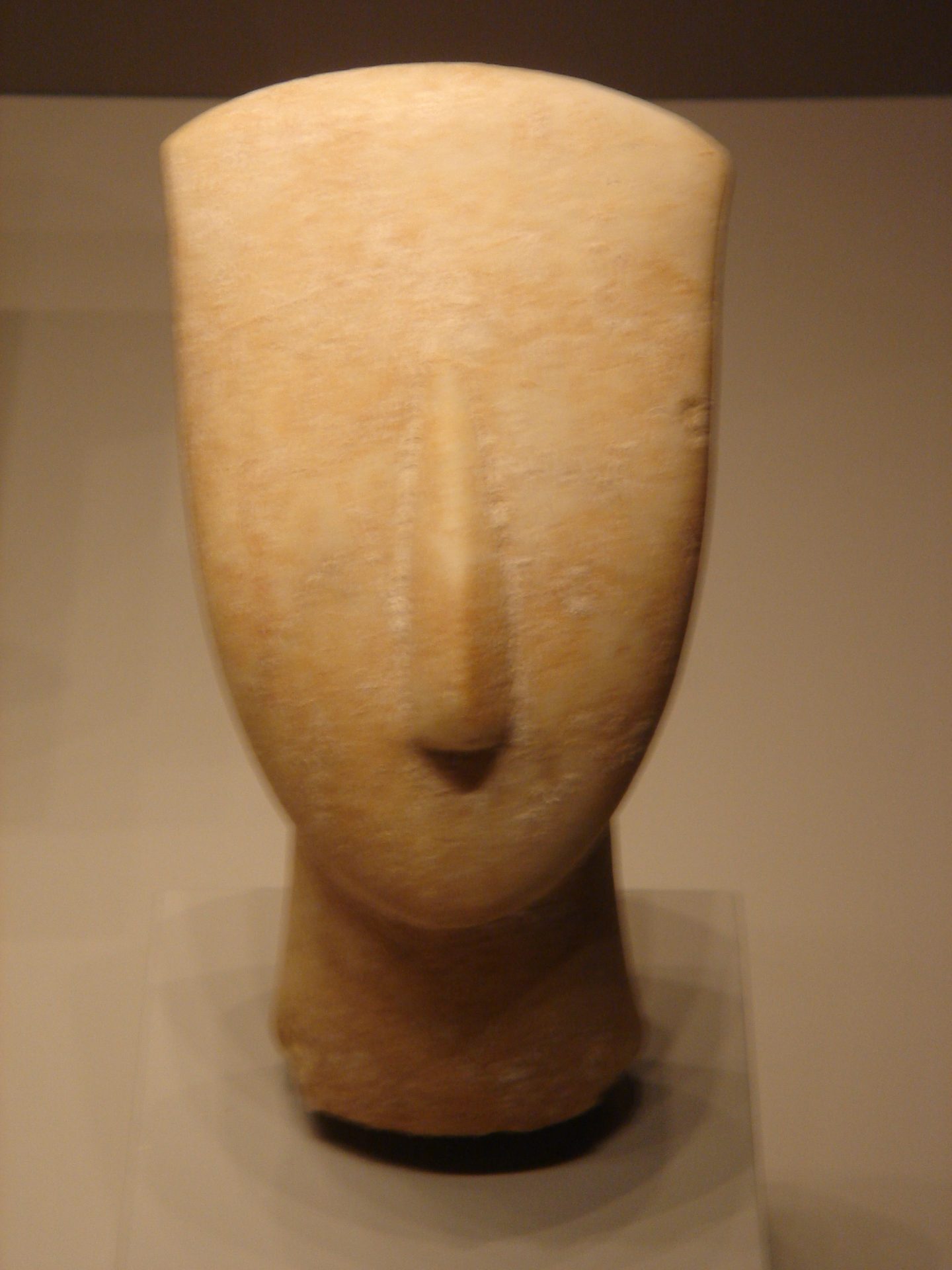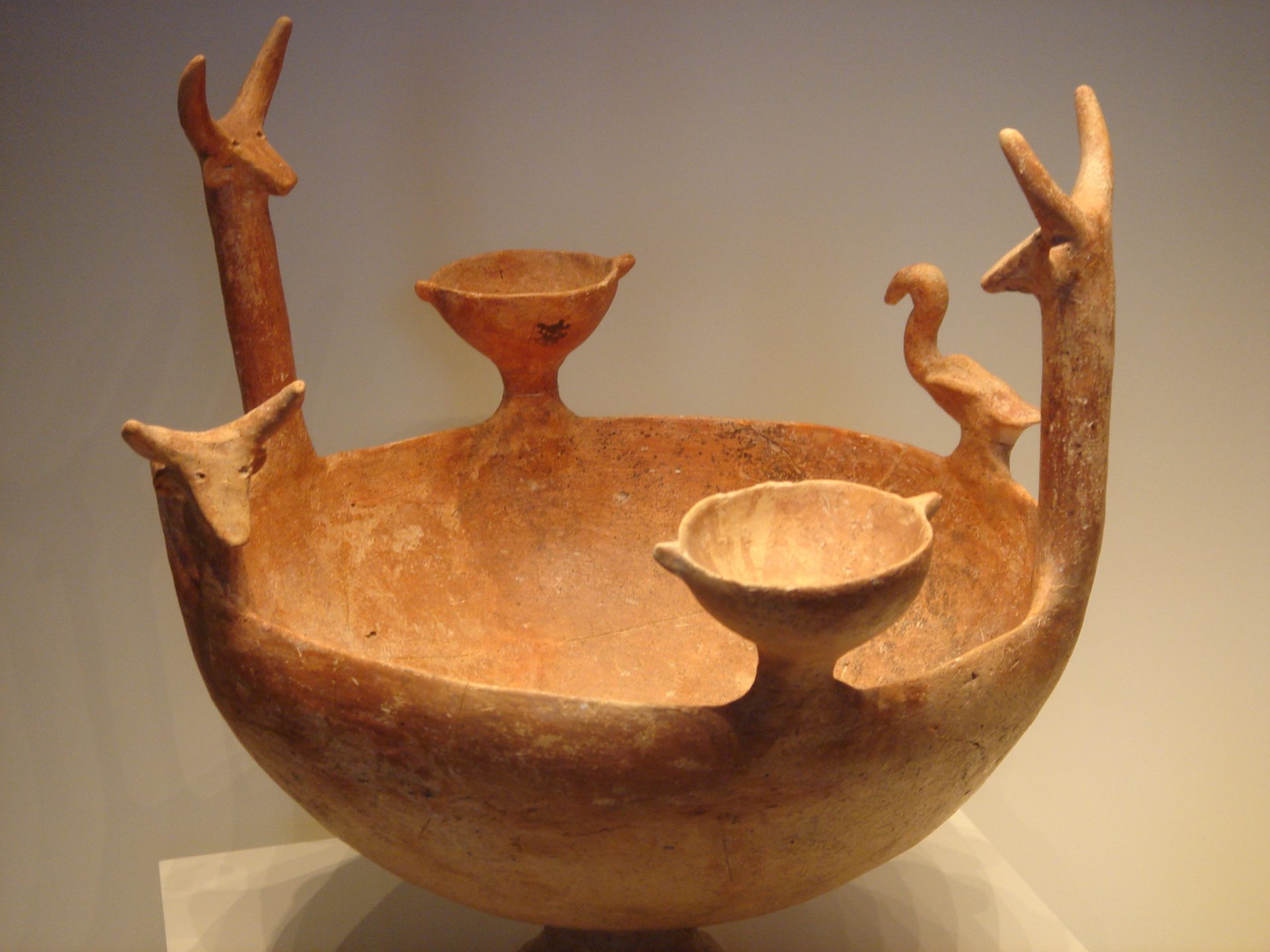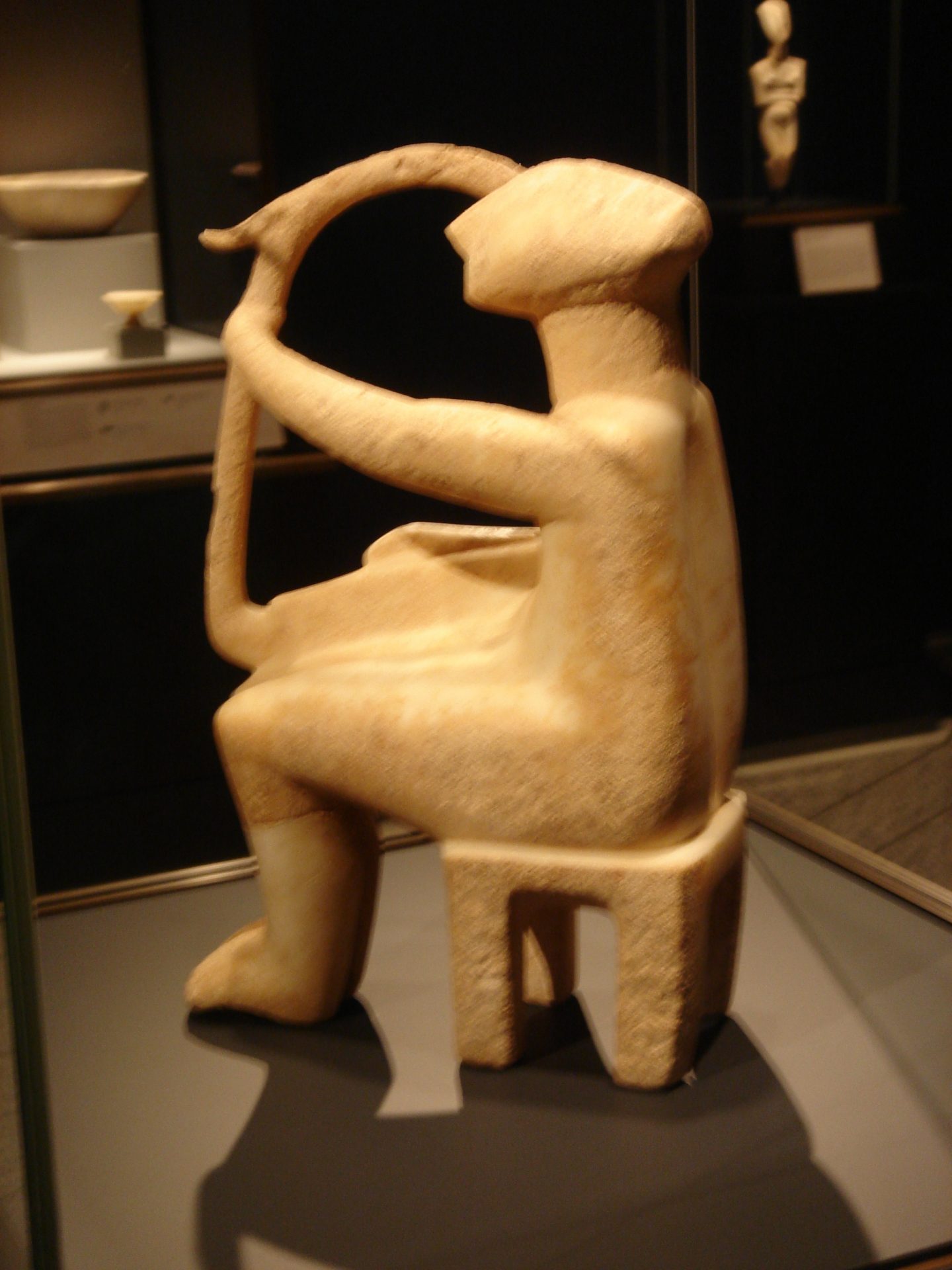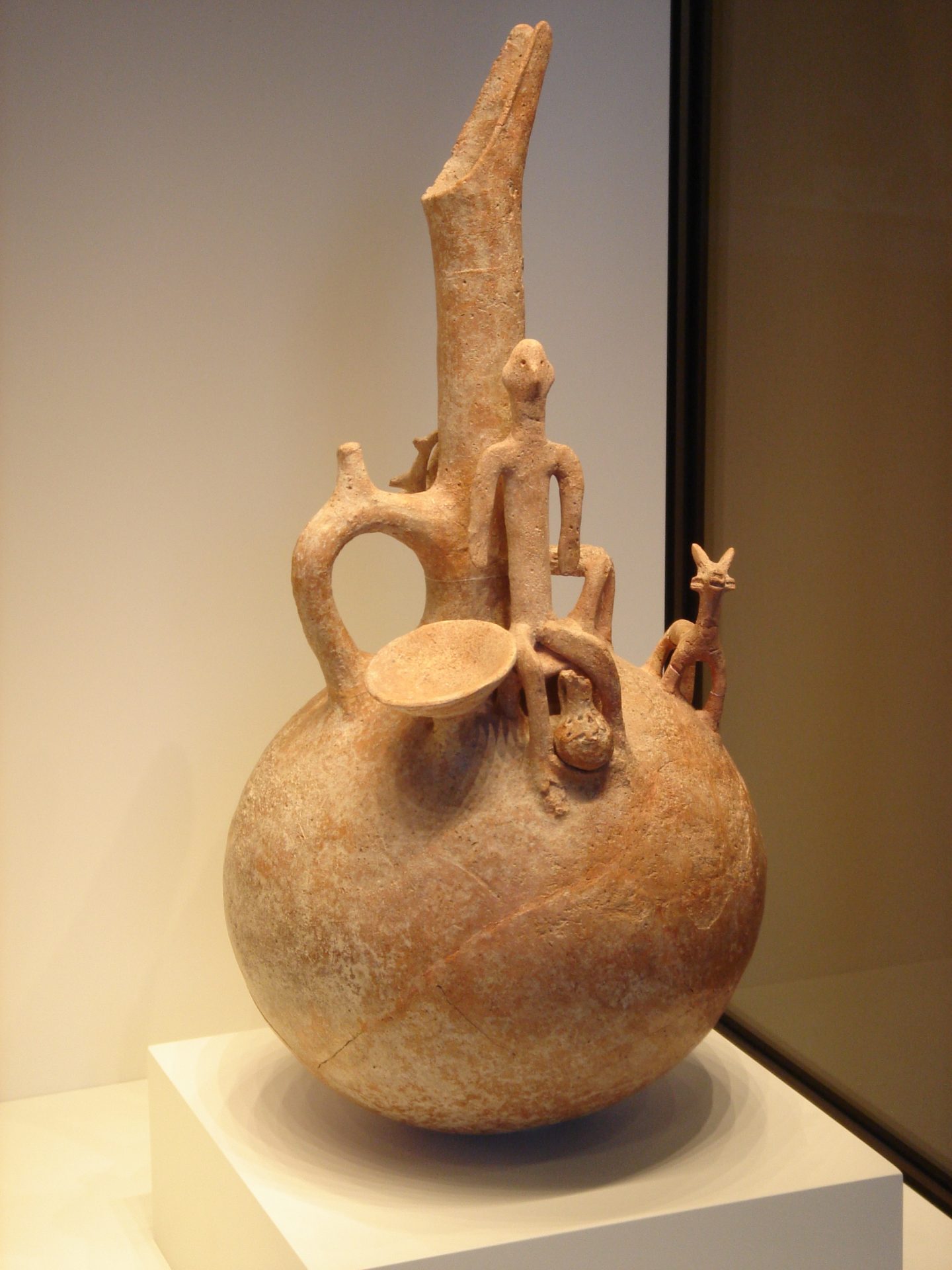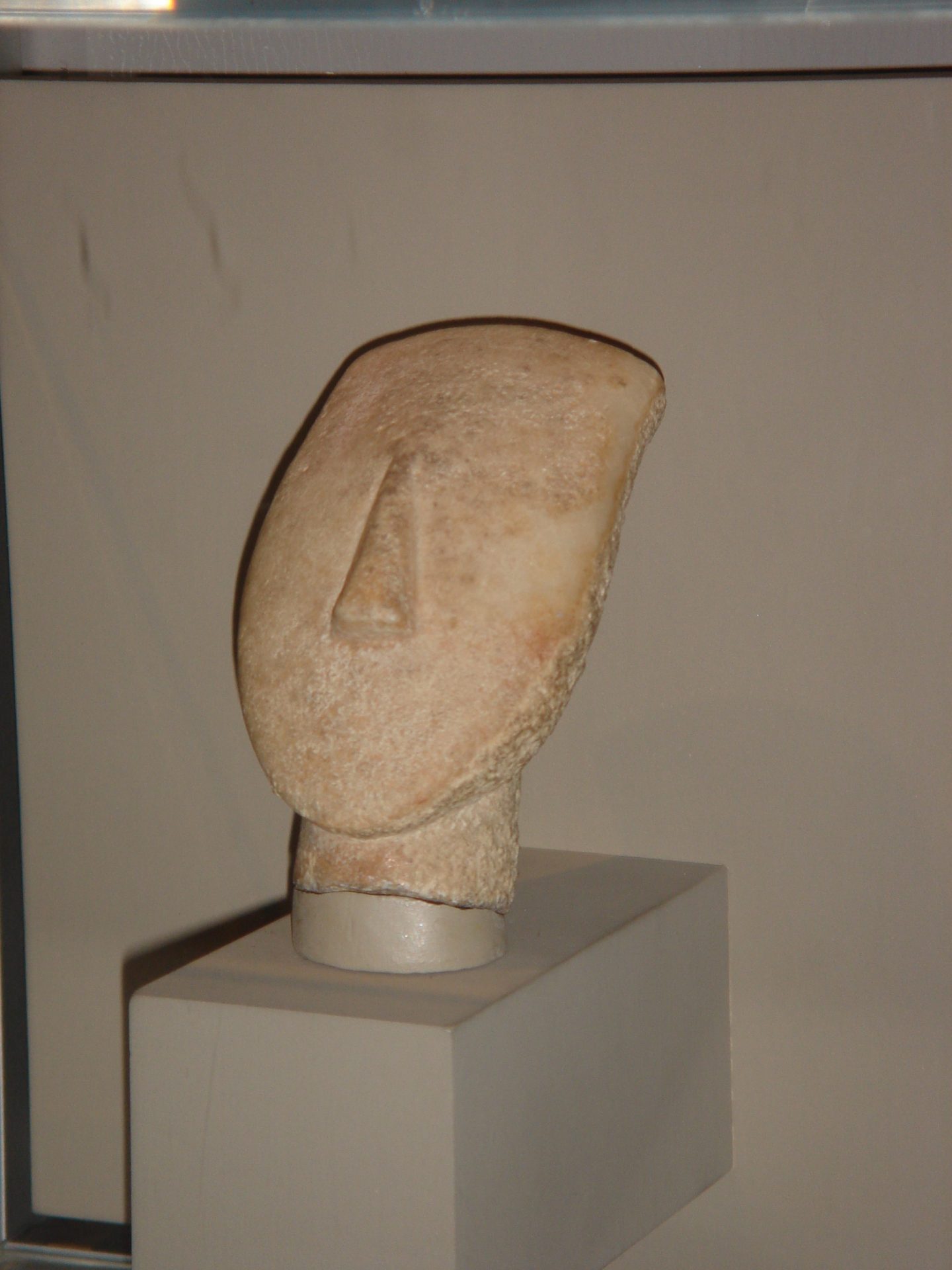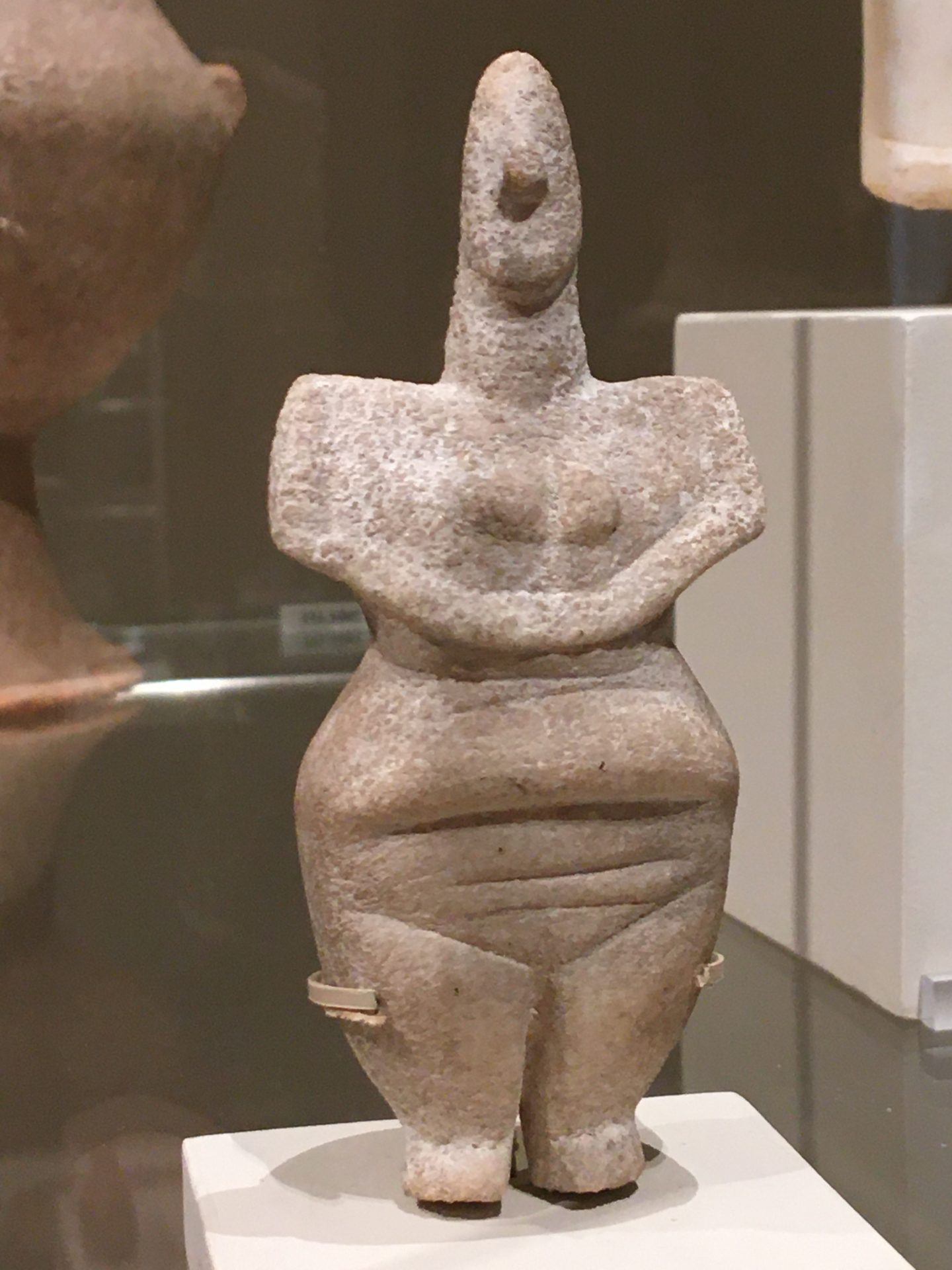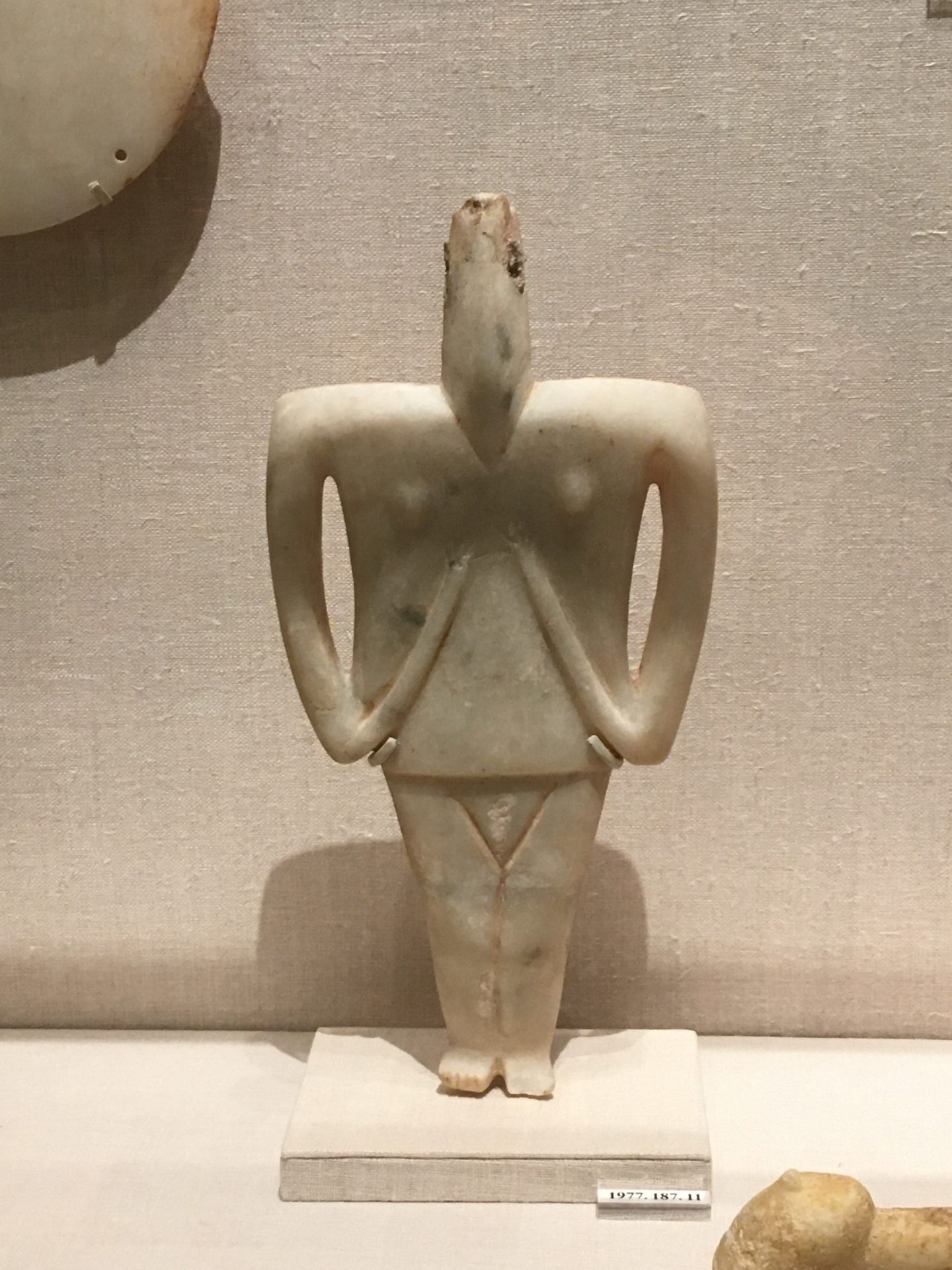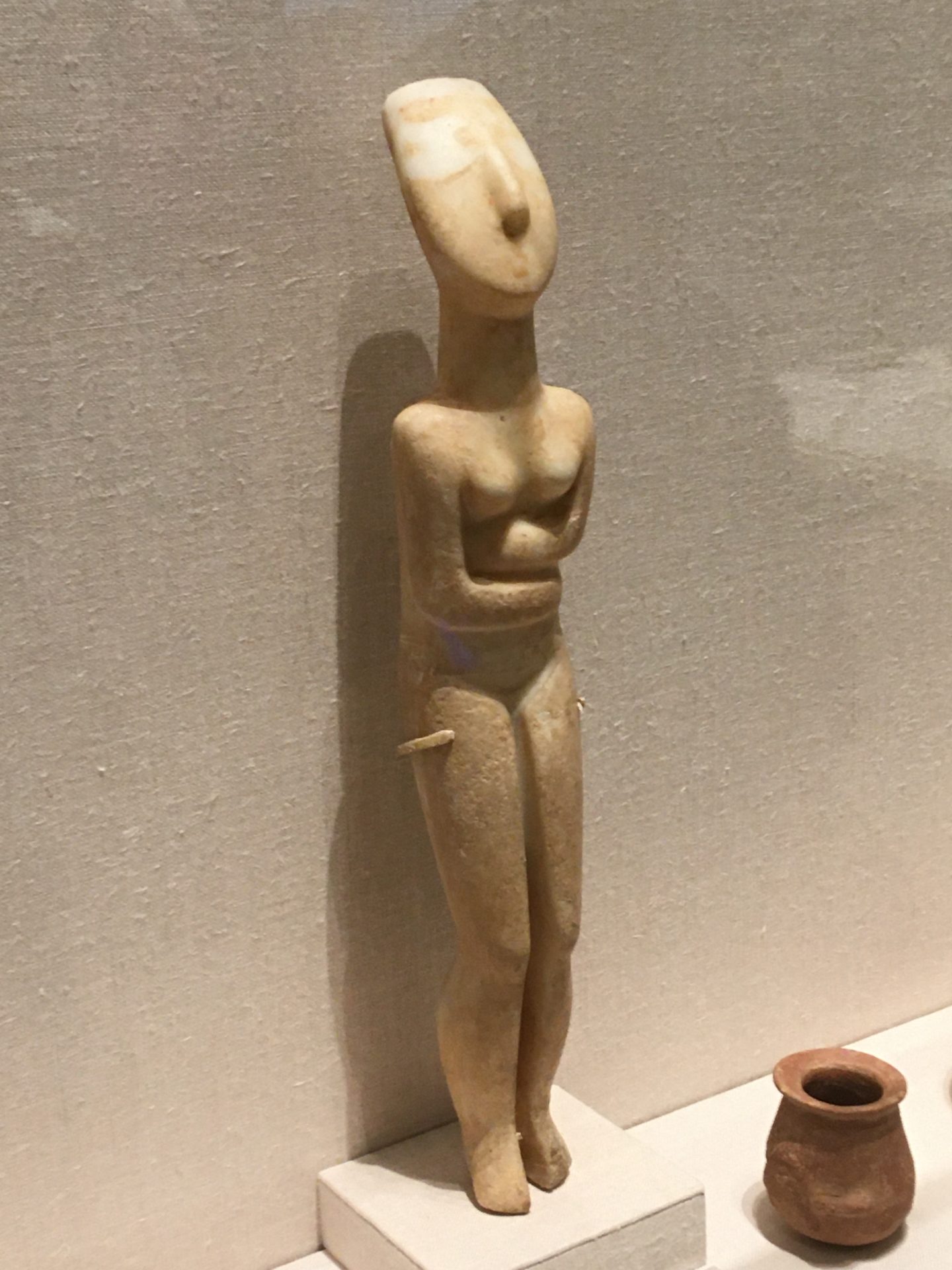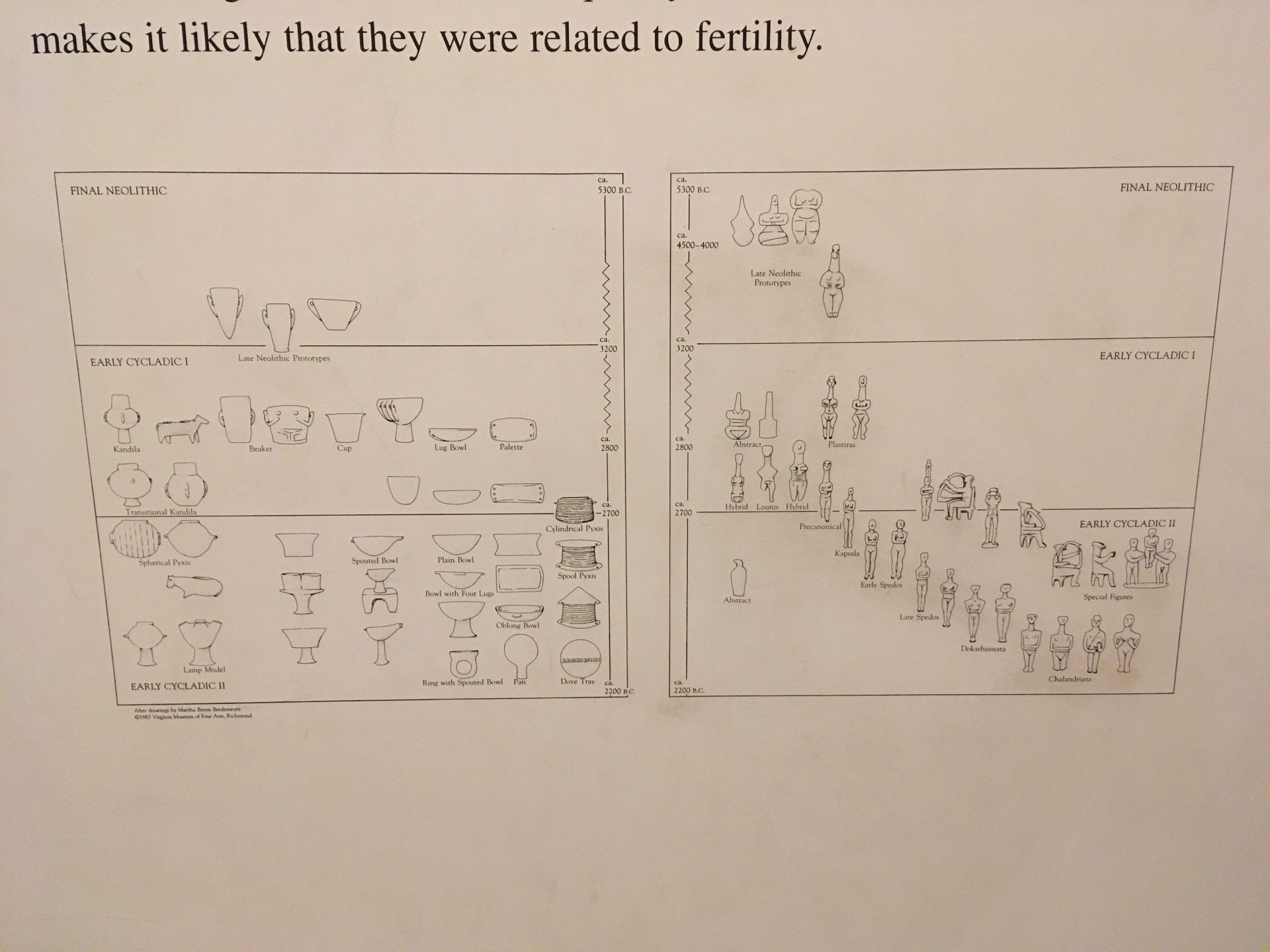Ancient art has long fascinated me. The cave paintings of Lascaux in France and Altamira in Spain rank high on my personal greatest hits list. The Venus of Willendorf is a favorite.
No wonder then that the art of the Cyclades captivated me at first viewing.
The Cyclades are a cluster of Greek islands southeast of Athens and the mainland.

The artistic peak of Cycladic culture was from 3300 to 1100 BCE. Along with Minoan civilization and Mycenaean Greece, the Cycladic people are considered as among the three major Aegean cultures. Their best-known type of surviving artwork is the marble figurine. Most are highly stylized female human forms depicted nude and often with folded arms. Archeologists debate their exact purpose, but the consensus is that they were used in funerary practices.
Many are struck by their uncannily modern appearance.
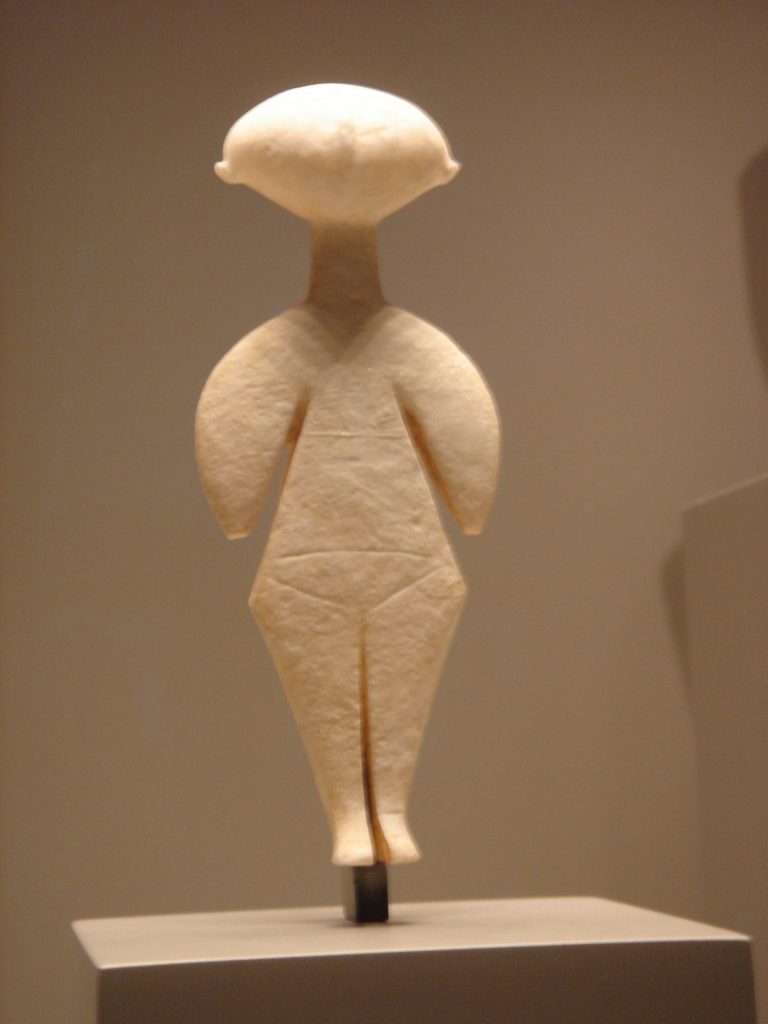
Displayed below are several (poor) photographs of portions of the collections of the Getty Museum in Los Angeles, CA (2007) and the Metropolitan Museum of Art in New York City (2019).
My intent is that you will be motivated to seek out opportunities to view them personally in your future museum explorations.


